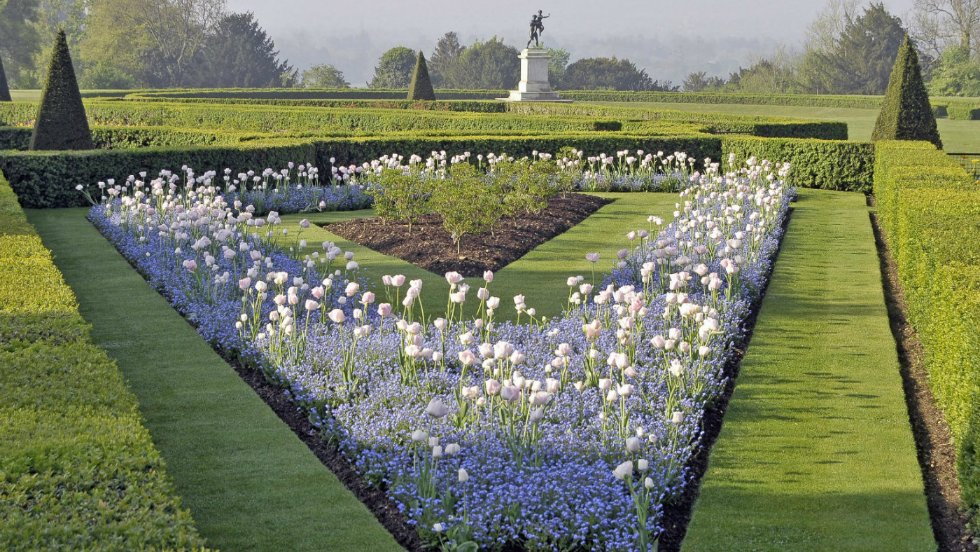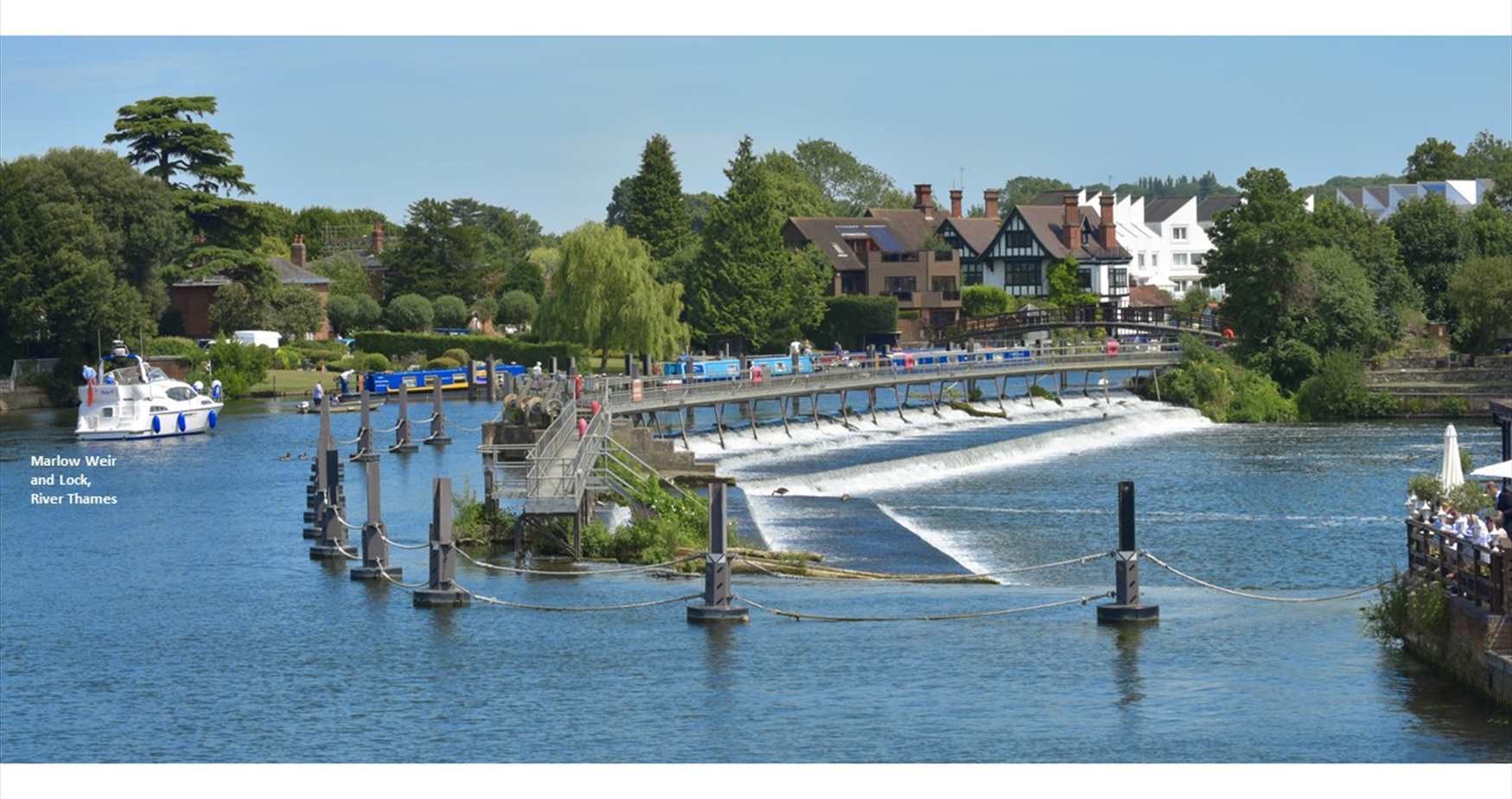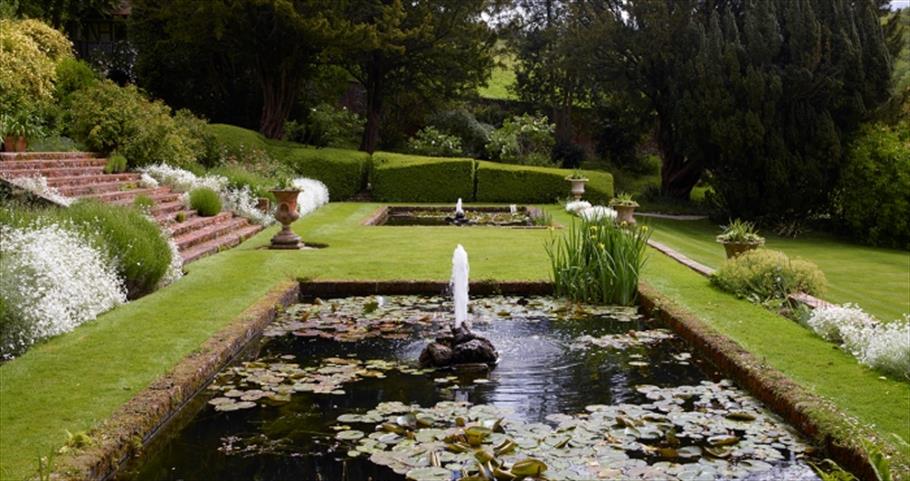You are here: Things to Do > Attractions > Gardens
Gardens along the River Thames
Where better to explore the diversity and history of English gardens than along the Royal River Thames, where history stretches back over 2,000 years.
In 1764 George III appointed Capability Brown as the Chief Gardener at the greatest garden along the Thames, Hampton Court Palace. Brown moved into Wilderness House, the official home of the Palace’s head gardeners. He planted the Black Hamburg vine in 1786 and it still flourishes today and has become the world’s largest grape vine, it still produces a yearly crop of black, sweet grapes that are sold in the palace shops in early September.
Head towards London along the Thames and stop at Kew Gardens. The gardens date back to the early 18th century, as a royal palace to today's globally renowned scientific institution for plant and fungal research. In 1772, King George III inherited the Kew estate and joined it with the royal estate in Richmond – two gardens became one. It was George III’s mother Princess Augusta who founded the original botanic garden at Kew in 1759.
Did you know?
Lancelot Brown was known as ‘Capability’, because when surveying a property, he spoke often of its ‘capabilities’.
Best English gardens along the River Thames
Explore the beautiful gardens along the River Thames. The landscape designs will truly inspire anyone looking for garden design ideas. These beautiful gardens are some of the best in the UK and will certainly give you the inspiration to do make your very own designer garden.
Not only will you find a list of gardens to visit and ideas for green-fingered family friendly activities, there’s woodland gardens and exotic plants from around the world.
Cliveden National Trust
 Cliveden National Trust gardens have swathes of daffodils and snowdrops provide a carpet across large areas of the gardens and woodlands. The magnificent gardens and breath-taking views over the River Thames have been admired for centuries. From late March to late April the garden will be a haze of blue whilst the sweet scent of 20,000 hyacinth bulbs gently wafts through the air. There are walking routes suitable for a variety of abilities starting from both the Information Centre in the garden and the woodland car park.
Cliveden National Trust gardens have swathes of daffodils and snowdrops provide a carpet across large areas of the gardens and woodlands. The magnificent gardens and breath-taking views over the River Thames have been admired for centuries. From late March to late April the garden will be a haze of blue whilst the sweet scent of 20,000 hyacinth bulbs gently wafts through the air. There are walking routes suitable for a variety of abilities starting from both the Information Centre in the garden and the woodland car park.
Stonor Park
The lush parkland of Stonor is set in a dramatic, sweeping valley deep within the heart of the Chiltern Hills. There are three gardens to explore; the ponds and fountains of the 17th Century Italianate Pleasure Garden, the old Kitchen Garden designed and nurtured by Lady Camoys and the Arboretum. In Spring, across the herbaceous border and through the iron gates, you can glimpse Grandmother’s Garden dappled with Daffodils . The Old Kitchen Garden is planted with apple and plum trees which blossom sensationally in the spring. In the Arboretum the young nut trees and long hazelnut avenue were planted in wake of the great storm of 1991. The malus, mulberries and ornamental cherries are under-planted with dapples of primroses and narcissi, splashing colour onto the landscape – a majestic sight in the spring when the cherry-blossoms fall.
Hampton Court Palace
Relax in over 60 acres of the beautiful Hampton Court Palace gardens that run down to the River Thames, featuring sparkling fountains, glorious displays of over 200,000 flowering bulbs and 750 acres of tranquil royal parkland. The Great Vine - planted in 1768 by the celebrated gardener ‘Capability’ Brown, the magnificent Great Vine still produces a yearly crop of black, sweet grapes that are sold in the palace shops in early September. The Privy Garden is the re-creation of William III’s Privy Garden, based on a design of 1702, the stunning symmetrical pattern incorporates the original varieties of plants and marble sculptures. The 20th Century Garden is contemporary style planting with trees and shrubs in an informal setting that creates a place of peace and tranquillity away from the busier areas of the Hampton Court gardens. Hampton Court Palace Maze - begun in 1690 as a form of courtly entertainment for William III, today the Maze covers one third of an acre and consists of half a mile of winding paths surrounded by towering 7ft-high (2 metres) yew tree walls. On average it takes 20 minutes to reach the centre.
The Savill Garden
First created by Sir Eric Savill, as his woodland garden in the 1930s, The Savill Garden, in Windsor Great Park, is known as Britain's finest ornamental garden, a garden for all seasons and a place of beauty and colour that's loved by horticulturalists and enthusiasts alike. With 35 acres of interconnecting gardens and exotic woodland, each garden has its own unique attraction, featuring a distinctive group of plants that introduce a fresh burst of vibrant colour throughout the seasons. It features plants from all over the world. Visit in Spring and enjoy the Daffodil Valley in Spring Wood.
Royal Botanical Gardens Kew
Royal Botanical Gardens Kew is a UNESCO World Heritage Site providing sanctuary to more than 50,000 different plants and over 7 million preserved species. From the vast Arboretum to an Alpine rock garden, there's something to see in every corner. Discover rare and threatened plants in the world’s largest Victorian glasshouse. Enjoy spectacular views across London from the heights of the Great Pagoda.
Download information on garden inspired trips along the River Thames
SEASONAL HIGHLIGHTS
Savill Garden - In exceptional years, spring can begin as early as late February with the appearance of magnolias, or it might be as late as April before the crocus followed by thousands of dwarf daffodils in the Alpine Meadow.Generally, any visit from the middle of March onwards and you will be rewarded with a host of early flowers.
.png)






